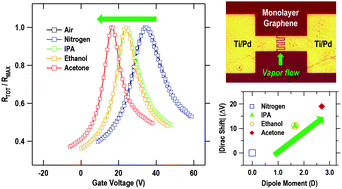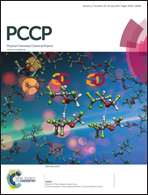Dramatic vapor-phase modulation of the characteristics of graphene field-effect transistors
Abstract
Here we report on dramatic and favorable changes to the operating characteristics in monolayer graphene field-effect transistors (FETs) exposed to vapor-phase, polar organic molecules in ambient. These changes include significant reduction of the Dirac voltage, accompanied by both an increase in electron and hole mobility, μ, and a decrease in residual carrier density, N0, to < 3 × 1011 cm−2. In contrast to graphene FET modulation with various liquid- and solid-phase dielectric media present in the literature, we attribute these changes to screening by polar vapor-phase molecules of fields induced by charged impurities and defects, nimp, in or near the active layer. The magnitude of the changes produced in the graphene FET parameters scales remarkably well with the dipole moment of the delivered molecules. These effects are reversible, a unique advantage of working in the vapor phase. The changes observed upon polar molecule delivery are analogous to those produced by depositing and annealing fluoropolymer coatings on graphene that have been reported previously, and we attribute these changes to similar charge screening or neutralization phenomena.


 Please wait while we load your content...
Please wait while we load your content...